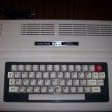-
Posts
1407 -
Joined
-
Last visited
Reputation Activity
-
 NicoD reacted to Igor in Armbian UEFI (arm64 and x86)
NicoD reacted to Igor in Armbian UEFI (arm64 and x86)
Many of us are using Armbian not just on ARM single board computers but also on servers (bare metal & virtual). We use our builds since we trust it more then Debian, Ubuntu, not to mention other distributions that are recklessly updating and one ends up as an OS tester and not OS user. Personally I use Armbian Jammy on Ryzen 9 workstation with great success. My primary use case is development / productivity. For the road I used to have 13" Dell notebook which recently suddenly died. It was out of warranty so I had to get something new. After some testings of various devices I settled with 12th Gen Intel i5-1240P powered Lenovo. Then I tried many general purpose distros to see how well they work and all had some (minor) troubles ...
We are having UEFI images (common image) since some time, but UEFI nor desktops were fine tuned nor ready for such performance daily driver desktop usage. We were close, but not close enough to just run it. Past two weeks we have been lifting general UEFI support, fixed many bugs and what came out is "Armbian ultimate developers desktop build".
- improved support in GRUB (armbian wallpaper) & HiDPI GRUB support
- all preinstalled applications are normal apt packages
- current 5.15.y kernel, Jammy userland (5.19.y has some strange issues)
- snapd is not installed (user can install it)
- HiDPI support (automated adjustments on big screen resolutions)
- NVIDIA graphics acceleration with proprietary driver (x86 only)
- Intel graphics acceleration also works out of the box
- preinstalled Google Chrome (x86 only)
- preinstalled Microsoft Visual Studio Code (x86 only)
- ZFS 2.1.5 ready (apt install zfsutils-linux zfs-dkms)
- face unlock works perfectly fine on this laptop
- installation to SSD drive to dual boot with Windows 10/11 is supported Armbian classical way by transferring actual live image to the prepared partition via nand-sata-install. All you need to do is prepare spare space on your drive, Windows 10/11 or Linux, UEFI support (most if not all hardware for past 10 years has it).
I have tweaked images (XFCE, Gnome, Cinnamon) a bit to my personal needs, but making changes is welcome.
Nice to have: disk encryption within nand-sata-install, small bug fixing, additional DEs. Currently we have CLI, XFCE, Gnome and Cinnamon. Others are too buggy.
https://www.armbian.com/uefi-x86/
https://www.armbian.com/uefi-arm64/
Please report where it works and how (well)!
-
 NicoD got a reaction from Werner in Inovato Qadra - Disable desktop now no wifi
NicoD got a reaction from Werner in Inovato Qadra - Disable desktop now no wifi
https://www.inovato.com/article/building-armbian
-
 NicoD reacted to balbes150 in Best SoC desktop computer replacement FOR productive use AND Youtube Playback, Prime Video??
NicoD reacted to balbes150 in Best SoC desktop computer replacement FOR productive use AND Youtube Playback, Prime Video??
Your information is already outdated .
Now there is a fully finished device that can be used as a full-fledged replacement for PC. Firefly Station M3 (rk3588s). This is a fully finished and ready-to-use device, you do not need to assemble anything manually, as from a designer. Today I tested it with Armbian to play fullscreen video. In 1080p mode - everything works without problems, including youtube. Details are in the topic about Station M3 on the forum.
DE works even in 4K mode quickly (especially if used as NVMe or SATA media, which are supported in M3)
ps I would not advise contacting any AML-based models.
-
 NicoD got a reaction from atone in Armbian related videos / video documentation thread!
NicoD got a reaction from atone in Armbian related videos / video documentation thread!
Here all other Armbian related videos.
And lots of review videos on my channel. So subscribe if you're interested.
Greetings, NicoD
-
 NicoD reacted to TonyMac32 in Khadas VIM2 & 3 bugs
NicoD reacted to TonyMac32 in Khadas VIM2 & 3 bugs
https://github.com/armbian/build/blob/master/config/sources/families/include/meson64_common.inc#L20
This is the default for Meson64. No one added the actual top speeds for the Vims apparently
https://github.com/armbian/build/blob/master/config/sources/families/meson-g12a.conf#L5
is the override for the Meson G12A. G12B needs something similar in here: https://github.com/armbian/build/blob/master/config/sources/families/meson-g12b.conf
-
 NicoD got a reaction from Sigma7 in armbian-gaming beta
NicoD got a reaction from Sigma7 in armbian-gaming beta
In this video I show how to use armbian-gaming.
-
 NicoD got a reaction from Avatar Ng in armbian-gaming beta
NicoD got a reaction from Avatar Ng in armbian-gaming beta
Hi all.
I'm working on a script that can install different Linux gaming tools like Box86, Box64, PPSSPP, ...
For now it can only install box86 and box64. There is also an issue installing wine, so this doesn't work either.
https://github.com/NicoD-SBC/armbian-gaming
Download and unzip and run script : sudo /bin/bash ./armbian-gaming.sh When ready I'll make a video about it and give more info.
I've tested it on the PineBookPro with Hirsute.
With the Odroid N2+ you need to activate panfrost, install dependecies for N2+, and then install box86. Tho it didn't work as it should.
If "install box86" gives a build error, try the dependencies for N2+ and try "install box86" again.
Please let me know your experiences on other systems.
-
 NicoD got a reaction from balbes150 in Video : Presenting Werner!
NicoD got a reaction from balbes150 in Video : Presenting Werner!
Hi all.
Werner has made a video where he presents himself and talks about how he got into using Linux, SBCs and Armbian.
A very interesting video.
This is a serie of video's. Igor and Lanefu also have made a video like that.
You can find the other video's here.
https://www.armbian.com/authors/
If you're willing to make a video like this. I am willing to edit and help out.
Greetings, NicoD
-
 NicoD got a reaction from Igor in Video : Presenting Werner!
NicoD got a reaction from Igor in Video : Presenting Werner!
Hi all.
Werner has made a video where he presents himself and talks about how he got into using Linux, SBCs and Armbian.
A very interesting video.
This is a serie of video's. Igor and Lanefu also have made a video like that.
You can find the other video's here.
https://www.armbian.com/authors/
If you're willing to make a video like this. I am willing to edit and help out.
Greetings, NicoD
-
 NicoD got a reaction from Werner in Video : Presenting Werner!
NicoD got a reaction from Werner in Video : Presenting Werner!
Hi all.
Werner has made a video where he presents himself and talks about how he got into using Linux, SBCs and Armbian.
A very interesting video.
This is a serie of video's. Igor and Lanefu also have made a video like that.
You can find the other video's here.
https://www.armbian.com/authors/
If you're willing to make a video like this. I am willing to edit and help out.
Greetings, NicoD
-
 NicoD reacted to RSS Bot in [CNX-Software] - NanoPi R5S router SBC/gateway with 2x 2.5GbE, 1x Gigabit Ethernet, M.2 NVMe storage coming soon
NicoD reacted to RSS Bot in [CNX-Software] - NanoPi R5S router SBC/gateway with 2x 2.5GbE, 1x Gigabit Ethernet, M.2 NVMe storage coming soon
FriendlyELEC’s family of NanoPi router SBCs and gateways will soon be extended with the NanoPi R5S board equipped with a Rockchip RK3568 quad-core Cortex-A55 processor, and providing three Ethernet ports (2x 2.5Gbps, 1x 1 Gbps), plus support for M.2 NVMe SSD storage. The company has not published any information publicly, but a post on Weibo social network reveals additional details with the single board computer being equipped with 2GB LPDDR4X, 8GB eMMC flash, two USB 3.0 ports, HDMI video output, and more. NanoPi R5S preliminary specifications: SoC – Rockchip RK3568B2 quad-core Cortex-A55 processor @ up to 2.0 GHz with Arm Mali-G52 MP2 GPU, 0.8 TOPS AI accelerator (RK3568B2 comes in a “plastic package” instead of the “metal-can type package” found on RK3568, but the features are the same) System Memory – 2GB LPDDR4 Storage 8GB eMMC flash for OS Key M socket for M.2 2280 NVMe SSD support Optional SPI [...]
The post NanoPi R5S router SBC/gateway with 2x 2.5GbE, 1x Gigabit Ethernet, M.2 NVMe storage coming soon appeared first on CNX Software - Embedded Systems News.
View the full article
-
 NicoD reacted to Igor in Armbian 22.05 (Jade) Release Thread
NicoD reacted to Igor in Armbian 22.05 (Jade) Release Thread
Release is not just freezing the code and generating images. Its a time when we pull together stronger, agree and deal with common goals and ideas. Things we are dealing with are complicated. Linux is complex, our framework is getting there too and only together we can deal with all this.
I started on freezing the kernel version. There is also some breakage, some related to our patches, some not. But since we have to freeze it sooner or later, perhaps now its the right time.
This brings a few good things at once:
temporally release people that are working close with maintaining kernel code @going@jock@balbes150@amazingfate myself ... this can bring more resources on trying to match with / merge armbian-next. @rpardiniworked for moths on this. Lets review the code and help sorting out bugs. Again. IMHO it is possible to merge, but if code remain unstable by the code freeze date (2022-05-14), we are merging after new images are generated. asking @Contributor/Maintainer board maintainers to engage in images building and testing (currently still from master branch) and bug reporting as earlier as possible (once PR 3736 gets merged) reproducible build framework in release branch. Which is most important long term consequence. Additionally, we would like to finish u-boot upgrade on Rockchip and release major forum refactoring @TonyMac32 @piter75 @balbes150
Happy Workers' Day!
-
 NicoD got a reaction from pipiyaoa in Video : Tanix TX6 review + How to install Armbian
NicoD got a reaction from pipiyaoa in Video : Tanix TX6 review + How to install Armbian
Here my review video of the Tanix TX6 TV-Box. I show Android and how to install Armbian onto it.
Greetings,
NicoD
-
 NicoD got a reaction from Willy Moto in Video : Armbian Desktop for beginners
NicoD got a reaction from Willy Moto in Video : Armbian Desktop for beginners
Hi all.
I made a new video where I explain all the basics of working with Armbian xfce4.
This for the absolute beginners that come from Windows. But a more advanced user can maybe also learn a few things from it.
Here is the video.
Greetings,
NicoD
-
 NicoD reacted to jimmij in [WANTED] YOUR pictures for the forums grid!
NicoD reacted to jimmij in [WANTED] YOUR pictures for the forums grid!
I wasn't sure where to put this...but this thread seemed closest. Armbian wallpaper / artwork rendered in Blender 3.1 with procedural text and materials.
-
 NicoD got a reaction from balbes150 in Video : Armbian Desktop for beginners
NicoD got a reaction from balbes150 in Video : Armbian Desktop for beginners
Hi all.
I made a new video where I explain all the basics of working with Armbian xfce4.
This for the absolute beginners that come from Windows. But a more advanced user can maybe also learn a few things from it.
Here is the video.
Greetings,
NicoD
-
 NicoD reacted to Igor in Khadas Vim4
NicoD reacted to Igor in Khadas Vim4
Samples arrived ♥️ HW looks fascinating, Armbian is yet to be ported so can't comment how good this is in realworld. Its shipped with stock Khadas Ubuntu, kernel 5.4.y, which is good to boot something ...
Technical specs at CNX.
-
 NicoD reacted to lanefu in Issues: Forum vs. GitHub
NicoD reacted to lanefu in Issues: Forum vs. GitHub
Hi great question. Def can be confusing. We're working to be more clear.
GitHub issues (NOT PRs) are meant to be specific to the Armbian build engine and not specific to devices.
Raise device issues on forum for conversation and hopefully find the attention of a maintainer. (Part of reason we do it on forum is it creates too much noise on GitHub for such a small team of devs)
If it's an issue a maintainer or armbian developer thinks it needs to be prioritized, they will add to our Jira
For those that don't like posting on forum anybody can open a draft PR with a proposed solution and explanation of what's being solved in GitHub
-
 NicoD got a reaction from Myron in I have a question about maintained boards and user-built images. (A possible candidate for an FAQ list.)
NicoD got a reaction from Myron in I have a question about maintained boards and user-built images. (A possible candidate for an FAQ list.)
For some people it is wanted/needed to change things. And for the devs it is a must.
It's just expected of people who do change things, that they know what they are doing.
-
 NicoD got a reaction from TRS-80 in RK3399 Legacy Multimedia Framework
NicoD got a reaction from TRS-80 in RK3399 Legacy Multimedia Framework
Take care of yourself and those around you. Best of luck. These things can wait. Cheers.
-
 NicoD got a reaction from TRS-80 in Video : Making an X86 Armbian build server + setting up an Odroid HC4 as NAS with plain Armbian and Samba
NicoD got a reaction from TRS-80 in Video : Making an X86 Armbian build server + setting up an Odroid HC4 as NAS with plain Armbian and Samba
Hi all.
In my latest video I make an Armbian Build server out of my old x86 PC. And I set up an extra Odroid HC4 as NAS with the old hard drives from my PC.
I hope you'll like it, greetings.
NicoD
-
 NicoD reacted to TRS-80 in armbian added to the distrowatch list
NicoD reacted to TRS-80 in armbian added to the distrowatch list
It seems to me like outreach efforts over the years (by people like @NicoD, etc.) have been putting us on the map. I also tried to help get the word out on last release announcement, which ended up being picked up / re-posted more places than ever before (including LWN, Tom's Hardware, r/linux, etc.) which I think probably helped, too.
-
 NicoD got a reaction from qm3ster in Rock64 official support
NicoD got a reaction from qm3ster in Rock64 official support
https://imola.armbian.com/archive/rock64/ ???
-
 NicoD got a reaction from Werner in Revised: Nicod has RPi's for sale and other stuff
NicoD got a reaction from Werner in Revised: Nicod has RPi's for sale and other stuff
Me, me meeeeee
-
 NicoD reacted to lanefu in Revised: Nicod has RPi's for sale and other stuff
NicoD reacted to lanefu in Revised: Nicod has RPi's for sale and other stuff
We have community member in France who needed an RPI3 for $dayjob. They found one and dont need one.
But it turns out @NicoDhas some RPIs for sale and more.
Help support Nicod and channel by purchasing all the crap in his office so he can clean up his camera angles ! 😂😂😂







(Phone).thumb.jpg.f60309bb32d95d32f028a6642a35c6ea.jpg)
